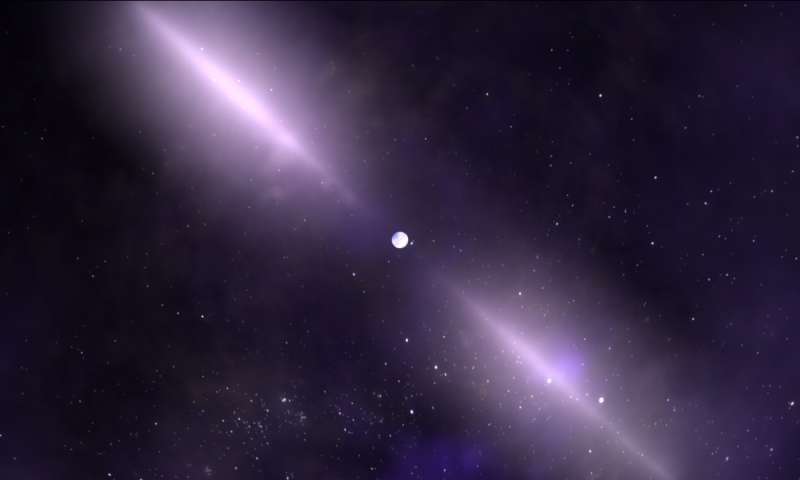Astronomer Jocelyn Bell made the chance discovery using a vast radio telescope in Cambridge, England. Although it was built to measure the random brightness flickers of a different category of celestial objects called quasars, the 4.5-acre telescope produced unexpected markings on Bell’s paper data recorder every 1.33730 seconds. The pen traces representing radio brightness revealed an unusual phenomenon. The unusual stellar objects had been previously predicted but never observed. Today, scientists know of over 2,000 pulsars. Technology advances in the past half-century allowed scientists to study these compact stellar objects from space using different wavelengths of light, especially those much more energetic than the radio waves received by the Cambridge telescope. Several current NASA missions continue to study these natural beacons.
The Neutron Star Interior Composition Explorer, or NICER, is the first NASA mission dedicated to studying pulsars. In a nod to the anniversary of Bell’s discovery,
NICER observed the famous first pulsar, known today as PSR B1919+21. NICER launched to the International Space Station in early June and started science operations last month. Its X-ray observations will reveal how nature’s fundamental forces behave within the cores of these objects, an environment that doesn’t exist and can’t be reproduced anywhere else.
The mission will also pave the way for future space exploration by helping to develop a Global Positioning System-like capability for the galaxy.
The embedded Station Explorer for X-ray Timing and Navigation Technology, or SEXTANT, demonstration will use NICER’s X-ray observations of pulsar signals to determine NICER’s exact position in orbit. NICER-SEXTANT is the first astrophysics mission dedicated to studying pulsars, 50 years after their discovery.

MasterDefibrillator on August 2nd, 2017 at 07:07 UTC »
This is a silly headline, but I think what it is getting at is that our knowledge of pulsars hasn't increased much since discovery. I don't work on them specifically, but I do know some that do, and they are constantly reminding us of how important their work is.
Liesmith424 on August 2nd, 2017 at 06:53 UTC »
"NASA continues to study Sun, 200,000 years after its chance discovery."
SailingSmitty on August 2nd, 2017 at 05:05 UTC »
I feel like NASA kinda continues to study lots of stuff years after a discovery.